
At CONEXPO-CON/AGG 2023 (14-18 March), Cummins reaffirmed its commitment to reach net-zero emissions from its products and business by 2050 in line with its Destination Zero strategy. The US off-highway-equipment engines giant says this will be achieved by advancing internal combustion engine technology while reducing carbon emissions without impacting operations, weight, or uptime.
Cummins says its net-zero goal will also be secured by building the broadest combination of zero-emissions technologies dedicated to the commercial vehicle industry, including battery-electric and fuel-cell electric powertrain solutions and electrolysers for green hydrogen production.
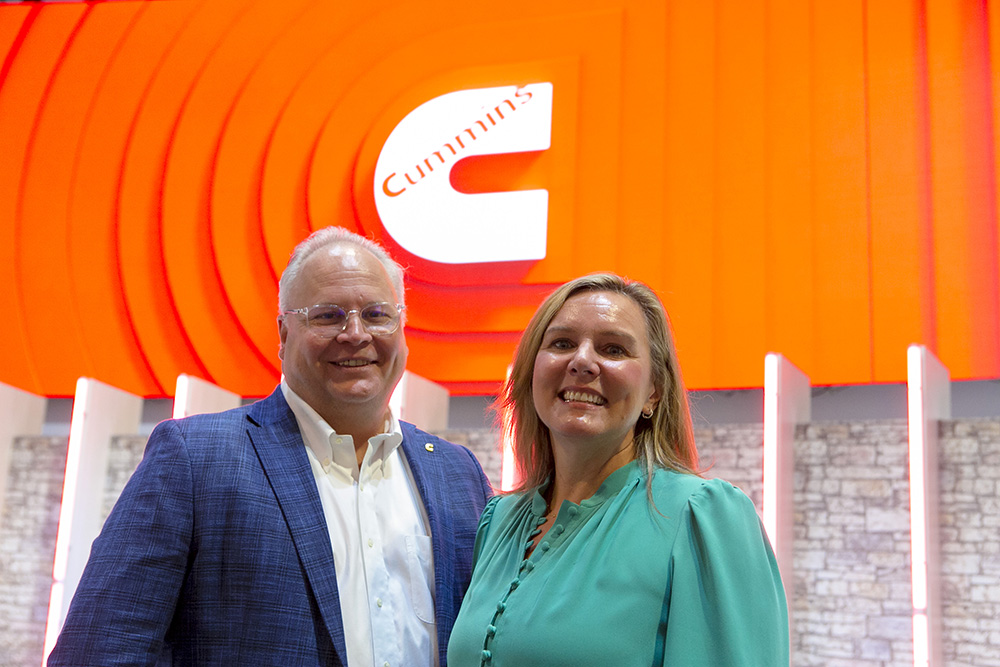
This complementary approach, says Cummins, lowers emissions today by matching technology readiness with infrastructure readiness to drive wide-scale adoption using the right technology at the right time.
Eric Neal, executive director of Cummins Off-Highway business, said: “We aim to support our customers on their path to zero-carbon emissions. This means meeting them wherever they are on their journey. We are leading the energy transition by providing our customers with the right technology and utilising our deep understanding of their needs and applications.”
Cummins emphasises that it has the knowledge, expertise, and scale across a range of solutions through growth and acquisitions to continue leading in the off-highway industry today and in the future.
“Cummins powers more types of machines and vehicles than anyone else. The breadth of our business across market segments and regions means we are the ideal partner to help our customers through this transition,” continued Neal.
Cummins showcased in Las Vegas its new fuel-agnostic 15-litre engine platform with hydrogen, biogas and advanced diesel engines. It offers OEMs the opportunity to accelerate the decarbonisation of heavy-duty off-highway applications.
This new platform, designed for the next level of emissions, significantly increases power density with a more compact installation envelope, enabling OEMs to increase machine capability and productivity without impacting running costs.

The fuel-agnostic architecture of the 15-litre next-generation engine utilises a common base engine with cylinder heads and fuel systems specifically tailored for hydrogen, natural gas, diesel and biofuels, including HVO.
The 15-litre hydrogen engine will be available with ratings from 400-to-530hp and a peak torque of 2600Nm. For applications powered by renewable biogas, this engine will offer ratings from 400-to-510hp with a peak torque of 2500 Nm available. The advanced diesel version features a broad power range of 450-to-650HP, with an impressive 3200Nm peak torque.
Amy Davis, president of Accelera, the new brand for Cummins’ New Power business segment, said: “We understand that no single solution or path to zero will work for all power needs, which is why we are developing the broadest combination of zero-emission technologies: fuel cells, battery systems and fuel-storage technologies.”
Cummins also highlighted at CONEXPO/CON-AGG 2023 its next-generation fuel cell engine suiting heavy-duty off-highway applications' duty cycle, performance, and packaging requirements. Available in 150kW and 300kW fuel-cell engine configurations, it incorporates variable pressure technology, which provides improved power density, efficiency, and durability, all while delivering a lower total cost of ownership.
As a result of Cummins’ acquisition of Meritor last year, Accelera’s product portfolio was broadened to include complementary ePowertrain products and EV powertrain integration capabilities. As seen, the Electric Central Drive Unit (eCDU) is a remote-mount electric powertrain designed for space-limited off-highway applications. Its innovative architecture enables increased vehicle-design flexibility and the ability to be located as needed. It helps reduce investment in vehicle-architecture changes such as hydraulic brakes and driveline parking brakes.
“Because of our global service, technical expertise, and ability to optimise the performance of applications, Accelera is in a unique position to help our end customers succeed during the energy transition. Working together with customer partners, we are rapidly evolving our zero-emissions technology to meet the diverse needs of our customers and further our shared goals of lessening our impact on the planet,” concluded Davis.
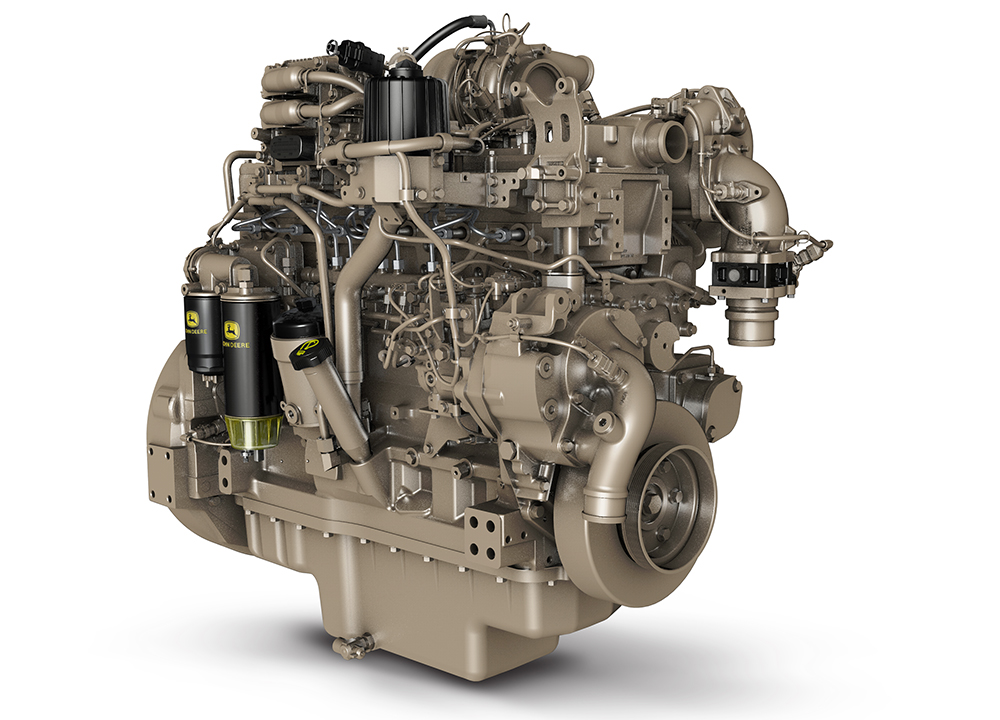
Volvo Penta demonstrated its own road to net zero at CONEXPO-CON/AGG 2023. The company showcased its electric driveline alongside its current portfolio of ultra-efficient EU Stage V and EPA Tier 4 final combustion engines – the D5, D8, D13 and D16. In addition to leveraging an array of proven technologies from across the Volvo Group, the innovative electric driveline solution would not have been possible without the firm foundation provided by Volvo Penta’s more mature power solutions and the expertise of the company’s engineers. Volvo Penta also highlighted in Las Vegas how it’s delivering in its service offering, focusing on creating value with customers through connected solutions.
Fredrik Högberg, president of Volvo Penta North America, said: “To succeed on our transformation journey into new, sustainable technologies to meet the industry’s net-zero ambitions, as well as achieve the Science Based Targets initiative (SBTi) for net-zero value chain emissions by 2040, we believe that strong collaboration with customers and partners is crucial. We cannot deliver the changes that need to happen alone – that’s why we are working closely with our customers, supply chain partners, governments, societies and other stakeholders.”
A popular choice in a wide range of machinery from excavators and underground mining trucks to crushers and screeners, Volvo Penta’s industrial combustion engines have been proven and optimised to meet customer needs in terms of productivity, uptime and total cost of ownership (TCO). Passive regeneration of the aftertreatment system eliminates unplanned stops during operation, while fuel consumption has been reduced by up to 5% over the previous models.
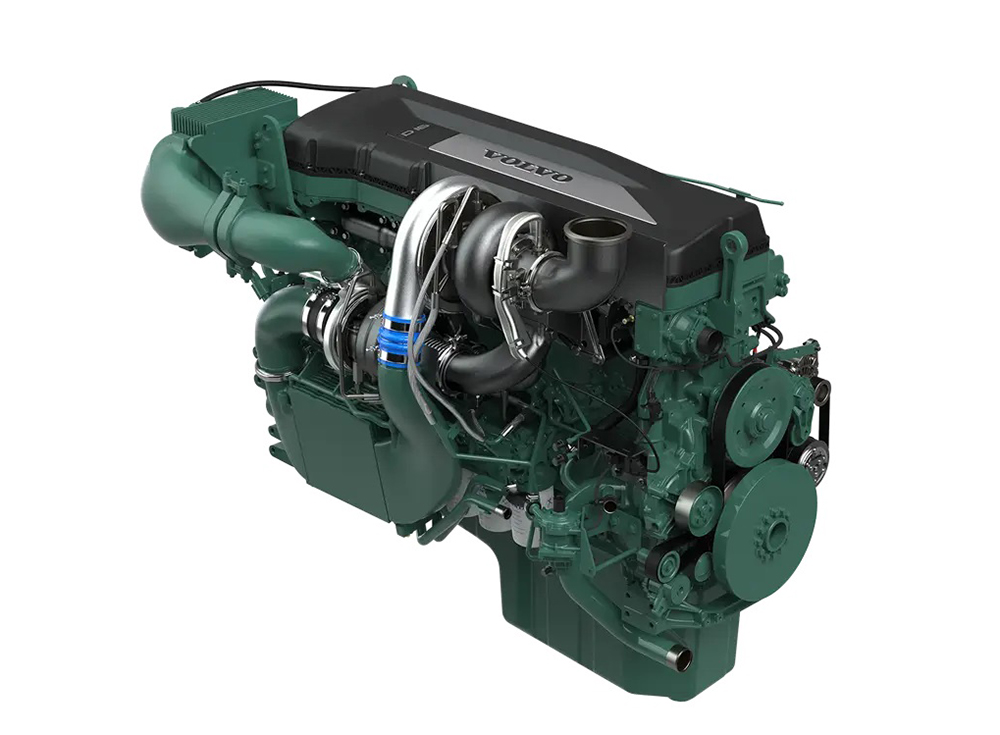
Since 2016, Volvo Penta’s industrial engines can run on renewable diesel (HVO), enabling a more sustainable choice. Further supporting customers looking to transition to low-carbon solutions is Volvo Penta’s dual-fuel hydrogen engine – an evolution of the company’s proven D8 model. The engine mainly uses hydrogen as a renewable fuel source, reducing CO2 emissions by a claimed up to 80% without impacting power or performance. Volvo Penta will continue to evolve its engine range to run on compatible alternative fuels, enabling the transition towards lower emissions in those markets that cannot yet support fully electric solutions.
Another aspect of Volvo Penta’s transformation journey is its growing foothold in electromobility as a system supplier. Volvo Penta’s electric-power solutions are backed by connectivity to help customers actively monitor the health of their drivelines in a predictive way throughout their lifespan.
“No matter where customers are on their transformation journey, Volvo Penta can offer solutions to meet their machine, application and business needs,” concludes Högberg. “We work closely with our customers and form long-term partnerships to create purpose-built power solutions based on their requirements. As part of the Volvo Group, we leverage proven technology, investments and competence from Volvo Trucks, Volvo Buses and Volvo Construction Equipment. We combine this with our customer, market and application knowledge, allowing us to optimise designs and technology for specific machines and applications, considering the duty cycles, climate and environment in which they will operate.”
The JD9 is the newest addition to the robust John Deere off-highway engine line-up. This powerful configuration is designed to deliver reliable power of up to 317kW while offering a lower complexity and installation cost. The JD9 is a new and improved iteration of the existing John Deere 9.0L engine and features Level 40 Engine Controls (ECU) and upgraded fuel economy.
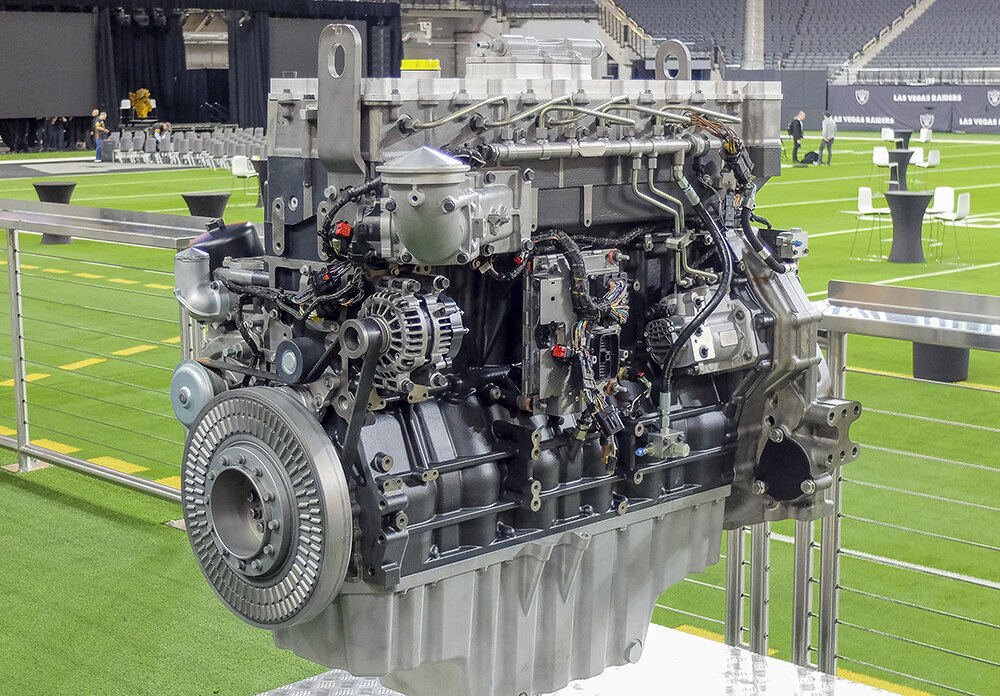
The exceptional quality of the 9.0L has been improved by adding a low-pressure fuel system, which is common in 13.6L engines, and removing the venturi in the engine pipes. The crusher-suited JD9 also offers increased power with single and dual turbo configurations. Its simplified in-line aftertreatment solution contains a diesel particulate filter (DPF), diesel oxidation catalyst (DOC), and selective catalytic reduction (SCR) system, achieving Final Tier 4 and Stage V emission levels. (The current 9.0L in production will continue to be available.)
Caterpillar claims that its new C13D diesel offers the highest power density for its class, replacing the previous C13B engine. Because of its high power output, the new C13D unit can replace the firm’s 15-litre engine and even the 18-litre diesel for some installations.
Development of the engine has utilised some of the latest digital technology, with the firm assessing assembly and servicing comprehensively to optimise these processes, even before the unit was in the metal. Designed to meet future requirements, the engine can use HVO and is being tested on B100 biofuels. It also has the potential to be modified to run on propane or even hydrogen, with Caterpillar having benefitted from its long experience developing gas engines.
There are eight power ratings ranging from 340-515kW for the six-cylinder engine, which meets the current Tier 4 Final and Stage V emissions requirements. However, the unit has also been designed with the capacity to be able to meet the Tier 5 and Stage VI requirements if and when these are introduced.
The new engine platform is 10% more efficient and offers an increase in power of up to 20% and up to 25% more low-speed torque than the previous generation Cat engines in its class. It is designed to perform at altitudes of up to 3,700m, which is twice as high as legacy Cat engines, and in extremes of ambient temperatures as high as 60°C and as low as -40°C with aids. Engine oil and service schedules have been extended due to the engine’s high efficiency and clean running. Engine life is likely to be long, with key components able to be reworked for reuse. A spokesperson for the firm commented, “We’ve intentionally designed the cylinder head for a second and even a third life.”
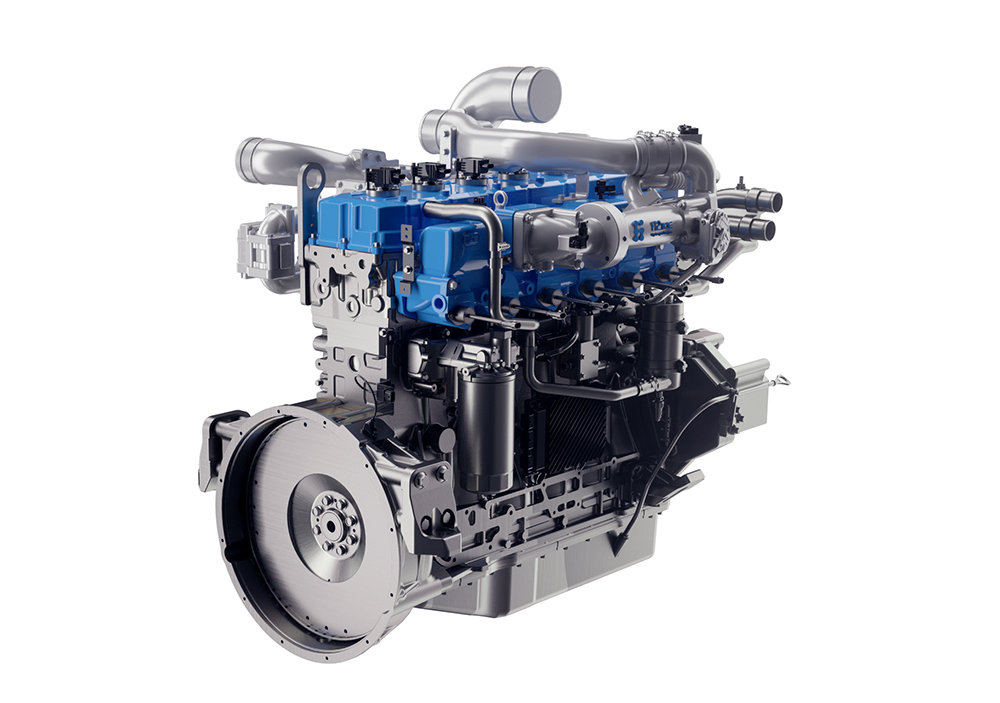
The high power density means that OEMs selecting the unit can install it more readily in their machines, while the engine can offer reliability even in more extreme applications. So far, Caterpillar has carried out around 12,000 hours of engine testing, with the C13D now being used in the field to further prove the design. And Caterpillar is confident that the unit will meet customer demands when it is ready for market. Scheduled for production in 2026, the Cat C13D is targeted for a wide range of off-highway equipment, including rock crushers, screeners and grinders; trenchers; material-handling equipment; and large industrial pumps.
The new engine platform will be equipped with Cat Digital Services, an integrated suite of robust software and hardware solutions supplying the insight equipment owners need to make decisions on the fly, secure equipment health, and minimise downtime.
Hyundai Doosan Infracore (HDI) has announced its timetable to mass-produce hydrogen internal combustion engines (ICE). The new units will be installed on commercial vehicles such as trucks, large buses, and construction equipment for validation by 2024, and full-scale mass production is planned for 2025.
HDI's initial under-development hydrogen engine is an 11-litre-class engine that produces a power output of 300kW and a torque of 1700 Nm at 2000 RPM. It satisfies Tier 5 / Stage 5 / Euro 7 regulations which require the emission to be 90% reduced from the current level to meet Zero CO2 (below 1g/kwh) and Zero Impact Emission (Zero Emission in the EU).








